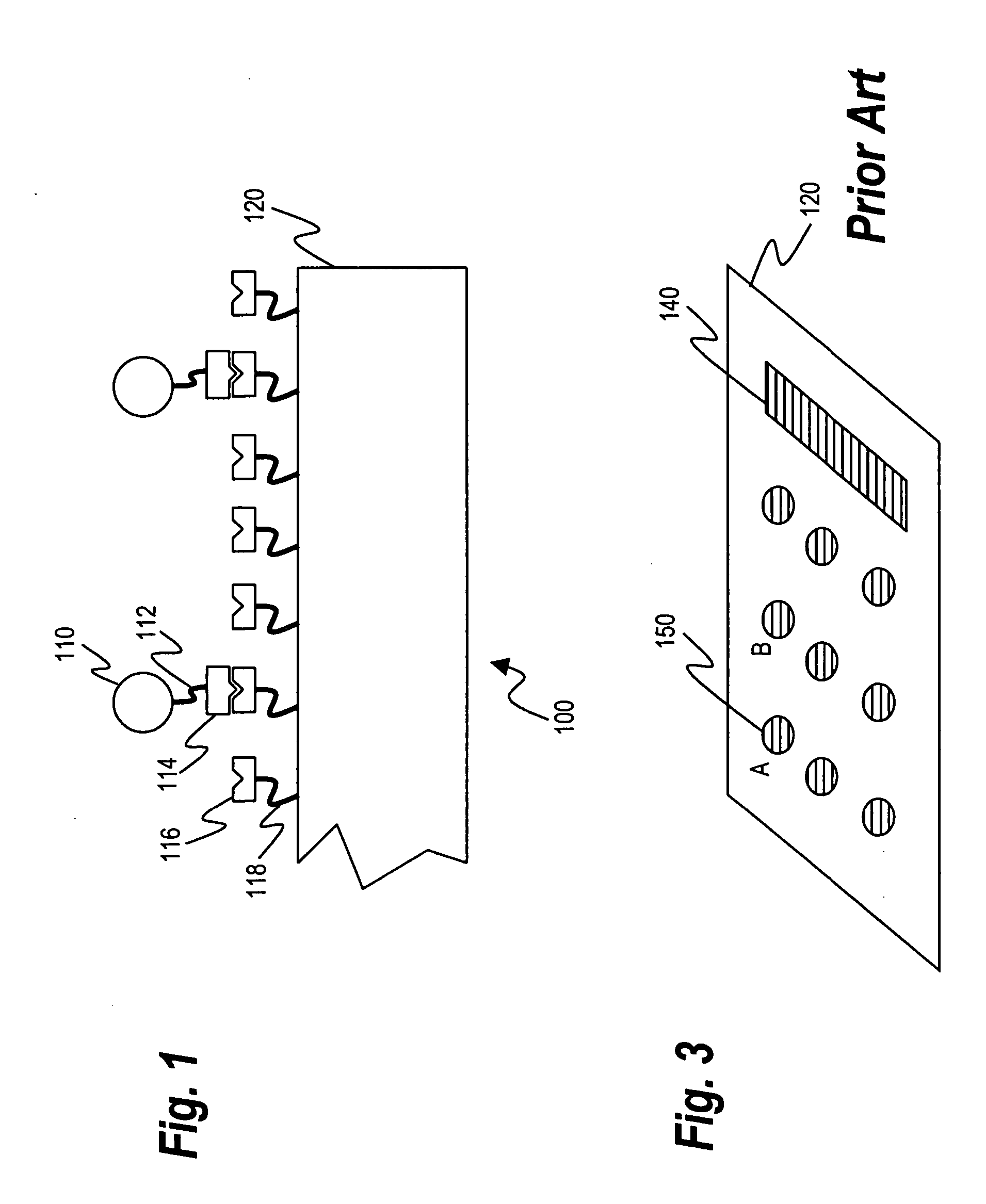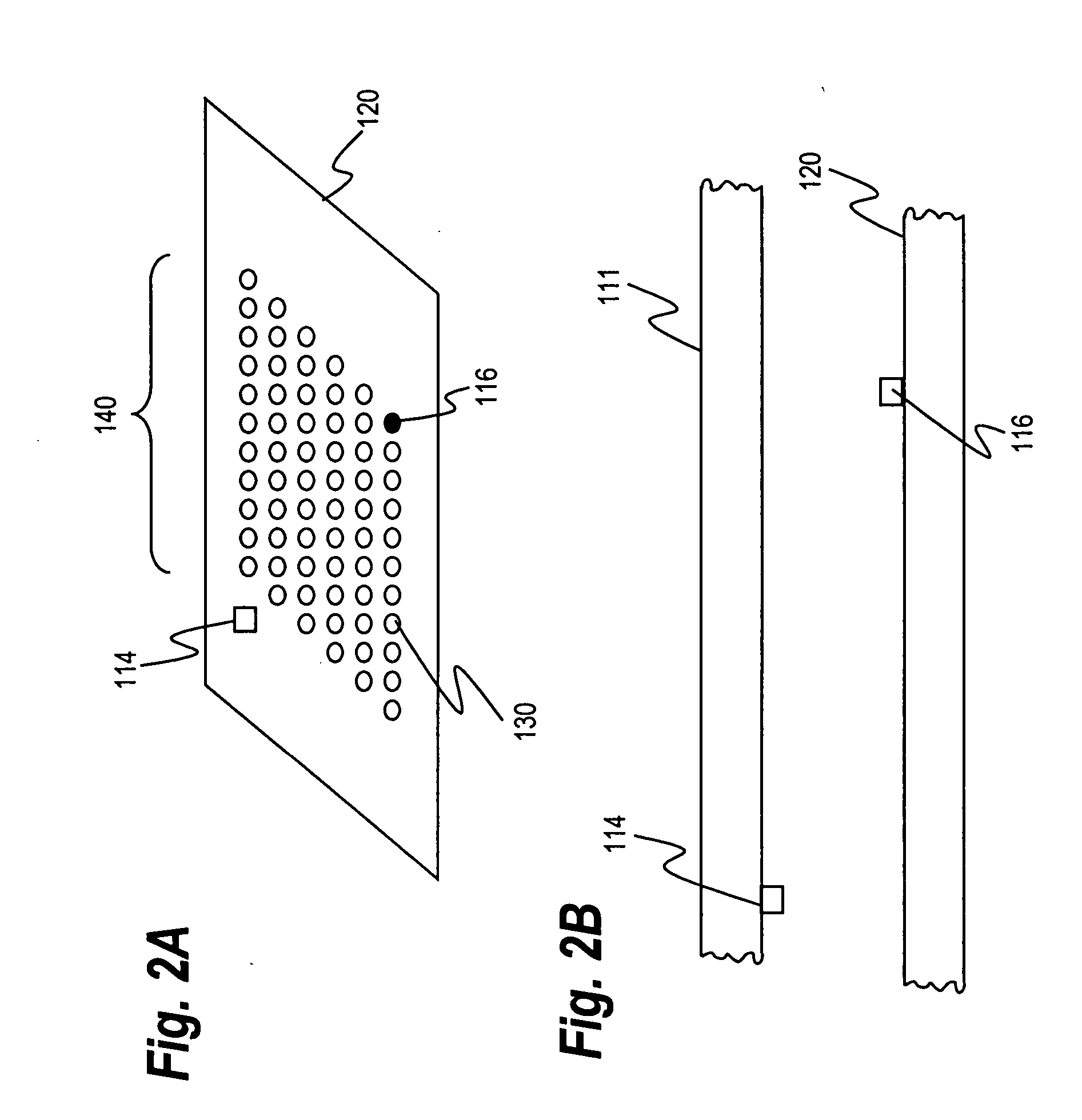Sensitive and rapid determination of antimicrobial susceptibility
a technology of antimicrobial drugs and susceptibility, applied in the field of sensitive detection of the susceptibility of microorganisms to antimicrobial drugs, can solve the problem of the amount of preparation used
- Summary
- Abstract
- Description
- Claims
- Application Information
AI Technical Summary
Benefits of technology
Problems solved by technology
Method used
Image
Examples
Embodiment Construction
Biodetection Background
FIG. 1 is a schematic diagram of a biodetection system 100 that utilizes a probe 116 having affinity for a target 114. The probe 116 is affixed to a solid substrate 120 by a probe linker 118. The probe linker 118 will generally comprise a coating that further serves to reduce the adventitious binding of target molecules to the substrate 120. The target 114 is connected via a target linker 112 to a tag 110, which can be detected by a detector, not shown.
The target 114 can comprise a variety of biomolecules, including nucleic acids, proteins, starches, lipids, hormones, and more. Furthermore, the target 114 can comprise, as will be discussed below in greater detail, whole organisms or oganelles, including bacteria, fungi, viruses, mycoplasmas, cell fractions (mitochondria, nuclei), animal or plant cells, and other organisms. In each case, the probe 116 will match the target 114, and itself can comprise nucleic acids (both for hybridization and as aptamers), p...
PUM
 Login to View More
Login to View More Abstract
Description
Claims
Application Information
 Login to View More
Login to View More - R&D
- Intellectual Property
- Life Sciences
- Materials
- Tech Scout
- Unparalleled Data Quality
- Higher Quality Content
- 60% Fewer Hallucinations
Browse by: Latest US Patents, China's latest patents, Technical Efficacy Thesaurus, Application Domain, Technology Topic, Popular Technical Reports.
© 2025 PatSnap. All rights reserved.Legal|Privacy policy|Modern Slavery Act Transparency Statement|Sitemap|About US| Contact US: help@patsnap.com



